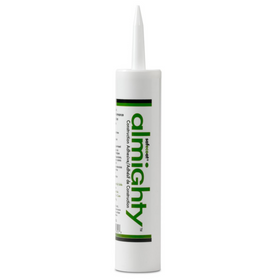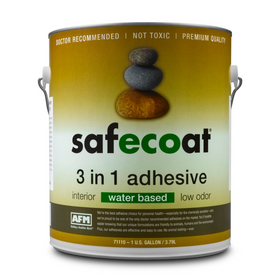
Lessons Learned From an Early Adopter of Sustainable Home Design
Last Updated: Apr 13, 2025Sustainable home design and building are finally gaining traction. According to Statista, “the green building market is anticipated to be among the fastest-growing industries worldwide.” As with any trend, there are always early adopters—and those are the people Rise likes to talk to gain key insights and lessons learned. Not surprisingly, we found one based in Seattle, Washington.
Way back in 2008, the Seattle-based design-build firm Fivedot co-founders and principals Geoff Piper and Stephanie Ingram designed and built “The Orchard,” a 3,000-square-foot structure as a spec house. Rise recently caught up with Geoff Piper to find out more.
“Seattle had hit a point in the market where there was a demand for modern sustainable housing,” Piper says. “We were seeing the modern market being served, but not the sustainable market—unless it was a one-off, single-family, high-end home incorporating sustainable technologies,” he explains. “Sustainable design had not yet made it to the mainstream market. We wanted to demonstrate how it could be done.”
The large lot that Fivedot had to work with couldn’t be subdivided. “We would have liked to put two smaller homes on the site, but weren’t allowed to,” he says, “so we decided to go a bit bigger with a four-bedroom home, which was designed to be as simple to operate and as sustainable as possible. The less complicated the house, the easier it is to maintain.”
Here’s a look at how Fivedot designed the modern sustainable home and, over ten years later, what the firm would have done differently.
Simple, Passive Design
“Our first priority is always to build a structure well. Quality lasts. That’s the most sustainable thing you can do,” Piper says. The second was to create passive systems. One was for cooling. “We designed the house around an open stairwell shaft that goes up to operable windows at the top, for a stack effect. Because hot air rises, the house can be easily and efficiently cooled by opening the windows.”
Table of Contents
- Looking Back

Another was for daylighting. The double-glazed, Low-E, and argon-filled windows were positioned to bring in maximum sunlight, and designed with enough glazing to minimize the use of artificial light during the day. In 2008, the windows installed exceeded Seattle’s progressive energy code, Piper says.

The house’s design is comprised of a simple series of stacked, offset volumes. The ground floor has a central services core in the middle that includes the powder room and stairwell. Airy living and dining areas open to the backyard. “Putting services at the central core allowed us to make the edges of the building more transparent,” Piper says, “to steal space from the outside to bring inside, and emphasize the relationship between the building and the site.”
The house opens to the back, which is quieter than the front aligned along a busy street. On the second level, the bedrooms are on the south side, with a hallway on the north side. The top floor, where the master suite and office are located, is open to the south and west to allow in more light. Fivedot clad the house in tight-knot cedar, which “at the time was a relatively affordable product,” Piper says.

Inside the home, an on-demand gas-fired boiler provides radiant heat installed beneath the floors. A solar hot water pre-heat tank heats the water. The concrete floors on the first level include 15 percent fly ash, a by-product of coal production. The casework was crafted by Kerf Design in Seattle, using only formaldehyde-free, sustainably harvested, Forest Stewardship Council (FSC) certified wood.
Building Materials
Shop high-performance building materials that are vetted for benefits to your health, your pocketbook, and the planet.

AFM Safecoat Almighty Adhesive Case of 12
AFM Safecoat
In Stock

AFM Safecoat 3 in 1 Adhesive
AFM Safecoat
In Stock

Quickscrews Cabinet Install Screws
Quickscrews
In Stock

AFM Safecoat Metalcoat Primer
AFM Safecoat
In Stock

AutoSlide Automatic Sliding Door System
Autoslide
Out of Stock
2 Colors

Autoslide Smart Tag Pet Door Kit
Autoslide
Out of Stock
2 Colors

AutoSlide Elite iLock Smart Tag Pet Door System
Autoslide
Out of Stock
2 Colors

Quickscrews Pan Head Pocket Hole Screws
Quickscrews
In Stock

Autoslide Elite Smart Tag Pet Door Kit
Autoslide
Out of Stock
2 Colors

Autoslide Motion Activated Pet Door System
Autoslide
Out of Stock
2 Colors

The kitchen and bath tile contain recycled content. The fireplace surround and countertops are from Paperstone, a solid-surface material made from post-consumer recycled paper. The open stairway and floors on the upper levels are bamboo, a fast-growing material that’s sustainably harvested.
Throughout the home, low-VOC paint, formaldehyde-free plywood, and prefinished floors minimize off-gassing. The radiant-floor heating eliminates the need for air ducts that can accumulate and redistribute dust and other particulates throughout the house.
“The design is fairly simple and uncomplicated, but rectilinear and straight,” Piper says. “To offset that angularity, we incorporated moments of beauty in the interior décor—often using repurposed or salvaged items—to provide more soft-edge contrasts.”

In the powder room, Fivedot installed a polished, live-edge slab as a counter, which was harvested by colleague from a tree that came down near the city courthouse. The first-level coat closet is covered with two reclaimed doors, mounted on a sliding track, from a salvage yard. A coffee table of reclaimed fir by Urban Hardwoods in Seattle is the focus of the living room.
Looking Back
What did they miss? And what would Fivedot do differently, a decade since the house’s completion? Four things.
- “We designed the roof on the lowest volume to be a green roof, which wasn’t installed for financial reasons,” Piper says. “A green or live roof would have increased the insulation value, which was already high, and also served as a way to contain water before it moved into the ground.”
- With more capital, Piper adds, “we would also have installed exterior insulation on the plane of the exterior, not just in the wall cavities and roof: rigid foam or Rockwool. One way you lose quite a bit of energy out of the home is through the physical movement of air through the envelope to the outside. Rigid insulation can be taped, creating a tight air barrier, providing higher performance over time.”
- Fivedot also would have nixed bringing treated rainwater back into the house for toilet flushing and clothes washing. “The health code requires a separate set of lines in order to bring water treated on-site back into the house,” Piper explains, “to prevent any untreated water from contaminating the city system. Installing the separate lines and water treatment system was expensive. The water used isn’t really that much, so the utility was limited for the amount of money it cost.”
- Finally, Fivedot would have liked to build an ADU. “This site would have been perfect for that,” Piper says. “At the time, city code didn’t allow for it. Now, it’s permitted.”
Still, Built Green, a holistic sustainable home certification program of the Master Builders Association of King and Snohomish counties in Washington state, gave the home a four-star certification. Moreover, every project is a learning experience. Piper says. “We’ve taken a myriad small details from this house forward into other projects.”
There are always tradeoffs when it comes to home building and remodeling. One lesson for home professionals? It’s always helpful to revisit projects and wonder: knowing what we know now, what would we have done differently?
Camille LeFevre
Camille LeFevre is an architecture and design writer based in the Twin Cities.

